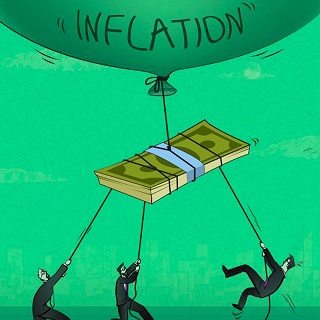How sticky is the current inflation?
Much of the globe is battling high to extremely high inflation, raising questions whether the central banks have done enough to douse the inflation fire or let it go out of control. Reserve Bank of India is no different. The focus and attention of RBI has been to manage and keep inflation below 6%. But since the beginning of this year, it has not been successful. As per the RBI Act, if it does not meet the inflation target of 4% (+/-2%) for 3 consecutive quarters, it is needed to provide a response to the government saying why it could not do so and what lies ahead. That is the exact situation RBI finds itself in today.
The primary tools that the RBI uses to bring down inflation is to raise the Repo Rate in the economy. Thereby banks borrow less from RBI as the funds become costlier for banks to supply funds for consumption and investment expenditure. This drags down economic activity and reduces demand, finally bringing down the prices. Higher rates also give an incentive to save.
Currently even with increased interest rates, inflation has not come down. Let us look at the reason for the same. The war in Ukraine has worsened things due to the imported inflation in the form of high agriculture, fertilizer, and fuel cost. But even before the war, inflation was already high due to supply bottlenecks during Covid times. And before covid, due to the unseasonal rains affecting farm produce in 2019. One or the other reasons have worked against the efforts of the RBI to keep inflation within its comfort zone of below 6%. Infact, from September 2019 to September 2022, inflation remained at 4% level only for 3 different months out of 36 months (about 3 years).
During the pandemic RBI expected inflation to come down due to weak demand. Demand did go down, but inflation remained above the RBI’s comfort level of 6% due to high commodity prices and massive supply side bottleneck gradually affecting core inflation, which is extremely sticky. RBI cannot be blamed entirely. It was biased towards growth and hoping that inflation would come down eventually. Unaware of the fact that the Ukraine-Russia war would make things worse in 2022, RBI cut interest rates on many occasions to boost growth.
When it did start to increase rates, mostly, in the wake of war and in response to the central bank across the world, the effect of the same may be felt with a lag. The effectiveness of these late measures would require the government to take a few complimentary fiscal measures in the form of reduced taxes and excise duty on fuel etc., especially when supply bottlenecks still exist.
Therefore, we need fiscal policy support to the monetary policy adjustments as proposed by RBI to have a decisive impact on the inflation in the medium to long term. Let us wait and watch.


